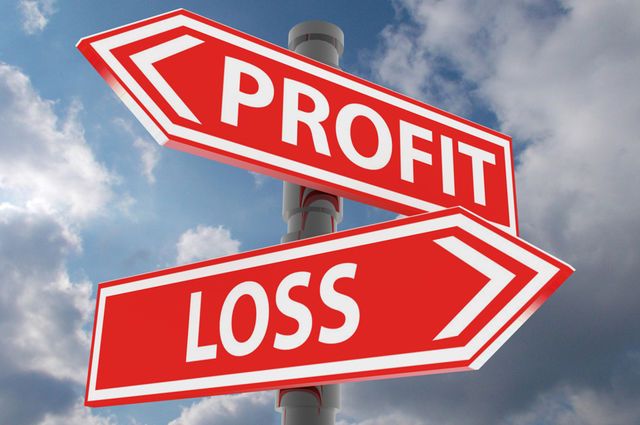Evolving from managing revenue to maximizing profit... How do you measure it?
12 experts shared their view
For as long as most hoteliers can remember, RevPAR has widely been accepted as the most critical hotel performance KPI. Taking both occupancy and average rate into consideration, RevPAR indicates how successful the hotel has been filling its perishable inventory AND the overall caliber of business that it was able to fill it with. Back then, more RevPAR simply meant more profit.
Since then, the distribution ecosystem has become very complex, with every channel having its own distinct pricing and commission structure. Distribution costs have become a crucial variable in the profitability of every pricing decision. The result is that even if the guests are all paying the same price, not all reservations are created equally.
How are hotels tracking results to capture this additional data? It's one thing to track it, but how can Revenue Managers incorporate this vital component into the strategic process? For those who are successful, does the incremental profit justify the extra work?

This World Panel Viewpoint is sponsored by IDeaS a SAS company
More information
Beyond pricing - the journey to profitability
Managing revenue has been our focus for a long time, ensuring optimal pricing strategies are offered to different types of customers, and that demand at the right price positively impacts room revenues.
Total revenue focus was the next step. As we started looking at all revenue streams, we realized you couldn't assume equal value from them all. Therefore, the need to assess revenue – and the relative cost and margins – will leads us to maximize profit.
To measure the evolution of maximizing profit, we need to first consider the development or improvements in the following areas independently, and then cohesively, as alignment is critical to ensure success.
- People - Knowledge and understanding of what drives profit and how it can be managed. For example, all employees must understand how the value of a customer is calculated and why. There must be strong knowledge of how to influence and impact the factors for profitability and an alignment on key metrics (KPIs.)
- Process - Profit-based decisions and management, such as processes across disciplines, needs to be updated to reflect the organizations priority on customers who cost the least and spend the most. Then, adopt a strategy to monitor the adoption level of those new processes.
- Tools - Technology must be integrated as part of the day-to-day operations. There needs to be a level of support to evaluate, forecast, and recommend the most valuable customers. Ensure the data feed, quality controls, and level of detail are consistent and available.
Each section's milestones and success metrics must be determined with a score and/or level indicator. Then the overall alignment of the three areas can be measured. Maximizing profits is not only about installing new technology or a couple of new metrics. It's also about changing the organizations vision, strategies, objectives, and culture.
It is time to acknowledge that RevPAR is just one piece of the puzzle that must be analyzed within a broader context. RevPAR is a topline KPI meant to measure the revenue generated per available room. But in order to track it correctly, a common line should be established, for instance in the way we record net or merchant rates vs gross rates: even though the guests are paying the same price, the margins we record are obviously different.
That is why the NetRevPAR is probably the most reliable and significant KPI as it is clean from any distribution costs and it provides the true profit of the reservations we acquire and the effectiveness of our commercial strategy.
Given the raising distribution costs and the complexity of distribution itself, we cannot neglect the importance of profit estimation when working on the optimal channel mix. Profitability is not just about the cost of commissions but also the discounts that are part of the sales strategy for any given channel (eg. fidelity programs, opaque discounts, promotions, and so on). These activities impact the overall RevPAR and profit generated and should be analyzed separately: the same exact promotion will indeed have a different financial impact when it comes from our own direct website vs an OTA. This is not just about the commission though, but when working on the channel mix optimization for profitability we must consider other critical elements such as the length of stay, booking window, and extra spend per channel that might also cause potential revenue displacement or missed incremental revenue for other more profitable channels.
The key is not to remain stuck in a KPI only but always look at the big picture and keep the channel mix optimization process as an ongoing activity as the RevPAR and Profit goals might change and should be adapted to the market demand and the property profitability goals.
In my view, RevPAR (calculated by dividing total room revenue by the total number of rooms available in the period being measured) is a very simplistic benchmark that does not capture the complexities and intricacies of today's hotel business. Even if revenue managers take into consideration the cost of distribution in their pricing decisions, there will be a lot of revenue opportunities and streams that will be left unaccounted for.
I am a firm believer that a hotel is more than a place for providing temporary sleeping quarters. In the post-pandemic era, it is time to analyze, identify, diversify and maximize the revenue opportunities and adopt a total revenue management strategy and culture at the property.
To begin with, in addition to the "classic" room revenue, any hotel has numerous untapped, quite often significant revenue opportunities from:
- Core "hotel" ancillary products
- "Non-hotel" ancillary revenues
- Underutilized hotel spaces
- Airbnb-type of hotel offerings
RevPAR simply cannot account for these important revenue streams. Therefore, I believe TRevPAR or total revenue per available room is far superior and more accurate KPI, measuring how effectively all hotel spaces are being used for revenue generating purposes.
TRevPAR is calculated by dividing the total amount of revenue generated by the property by the number of available rooms, regardless of whether rooms are sold.
Generating non-room and ancillary revenues requires a) the implementation of merchandizing strategy and culture at the property/hotel company, b) incentivizing and training your staff, including your revenue management team, and c) adopting technology solutions to automate as many of the internal processes as possible.
Let's review some of the non-room revenue opportunities smart hoteliers utilize to diversify their revenue, opportunities all revenue managers should include in their pricing decisions.
Non-Core Ancillary Revenues
In addition to the core hotel ancillary products like room upsells and upgrades, including from the new Hilton-type room self-selection capability, many hoteliers generate significant revenues from Non-Core Hotel Ancillary Products and here are just a few of them:
- Sale of guest stay-enhancing ancillary products like champagne for special occasions, romantic stay decorations, chocolate covered strawberries, ice cream, bouquet of flowers, breakfast in bed, etc.
- Sale of city passes and tickets to local museums, theme parks, sporting events, concerts and performances, art exhibitions and other attractions, as well as sightseeing tours to places of interest. Better off, selling hotel packages including these local attractions and activities would not only "hide" the room price, but will allow the hotel to sell on value vs sell on rate alone.
Maximizing the Utilization of Hotel Spaces
During and post-pandemic, many hoteliers discovered significant revenue generation opportunities from their underutilized hotel spaces:
- Creating co-working spaces: Similar to Roger Smith Hotel's KettleSpace Flexible Workspaces, create work-from-hotel spaces for out-of-towners, digital nomads and local entrepreneurs who do not want to be tied down by office leases. Create Room and Office daily, weekly and monthly packages and promotions, including WiFi, coffee, bottled water, snacks and catered lunch.
- Creating F&B revenue opportunities in empty and underutilized spaces by installing vending machines, pizza or burger robots. These robots can provide tremendous revenue opportunities for budget, economy and midscale properties without F&B or replace struggling restaurants at upper midscale and other 3- and 4-star properties.
- Vending Machines: We will be witnessing a real resurrection of the vending machine serving breakfast, snacks, hot and cold drinks, naturally in a much more sophisticated reiteration. Marriott is already testing giant vending machines it calls "grab-and-go marketplaces" that can dispense everything from coffee to breakfast sandwiches and cereal.
- Creator, San Francisco's automated burger restaurant, features a 14-foot burger machine with more than 350 sensors that is capable of making 130 premium quality custom burgers an hour, plus a window for takeout orders.
- Piestro, an innovative robotic pizza shop, can deliver high-quality artisanal pizzas within 3 minutes. Their fully-automated machines are being designed with the aim of allowing for zero contact food preparation, zero food waste, consistent quality, and a much lower cost of operation.
- Utilizing unused conference/function space: With the corporate group and netting's markets ramping up at a slower pace than leisure travel, utilize unused function spaces to offer yoga classes, wellness programs, cooking classes, new book readings and author signing events, neighborhood craft shows, etc.
Creating "Airbnb-type" of hotel product and revenue opportunities
Let's face it, there is a real "booking war" going on between hotels and Airbnb and short-term rentals in general for every guest and every room night. To sway the travel consumers away from Airbnb, many hoteliers focus on and promote features and amenities that short-term rental properties lack.
Here is a simple and inexpensive action plan used by some hoteliers to present their unique value proposition to the traveling public.
- Start by monitoring closely Airbnb's, Vrbo's and other vacation rental properties in your market. Research and identify the short-term rental properties in your neighborhood, and what are their typical amenities and features. Your revenue managers should ask your BI rate shopping tech vendor to add short-term rentals to the set of competitors your are monitoring on a daily basis.
- Identify your property's value proposition and create a list of all of your property's amenities, services and attributes that, in your view, are better than the average vacation rental in your area. Then review and update the property descriptions on the hotel website, social media profiles, CRS and WBE descriptions, directory listings, Google Business Profile, and promotional materials.
- Create a short-term rental type of a hotel product: Introduce weekly and monthly rates for suites with kitchenettes, adjacent rooms to appeal to family travelers; rooms with use of a community kitchen, washers and dryers, digital nomad-type of packages and promotions, etc.
- How many hotels offer rates for extended stays or family stays which are favored by travel consumers in the current environment? Remember, a weekly rate is NOT a daily rate multiplied by seven. A monthly rate is NOT a nightly rate multiplied by 30! Make sure that your CRS, WBE (Website Booking Engine) and Channel Manager can support weekly and monthly rates and fire them if they can't.
- Make sure to educate your staff about the key advantages your property has over the short-term rentals in the area: from better location to no cleaning fees to better cleanliness protocols, luggage storage and really high-speed Wi-Fi and free breakfast.
The moral of the story? Hire and train a) employees who do not think that diversifying your property revenue is too much work and b) revenue managers that are able and willing to include your property's diverse revenue streams in their pricing decisions, and you take it from there.
Profitability and Flow through are a tricky component especially because we talk profitability but in reality look at a small fraction of it only as far as revenue management is concerned...if it is looked at at all. Many talk about profitability and really just talk about commissions paid, not incorporating staff cost, tech stack cost, etc. so its really just about "channel profitability".
We need to be careful as an industry not to pile on more onto a department that struggles with its current set up. We are going full swing where it was hailed as the department to take over only to be asked again if it is really just a small section of Sales and Marketing.
A tip for hoteliers: the work at present would outstrip the benefits. Low hanging fruits and glaring obvious loss leaders are not the issues. When you however go into more details you can guide yourself by asking this three questions:
1. Did I know I am going to fill? If yes, look at business mix as there is room for improvement. If no, ask Q2
2. I know I wouldnt fill. Did this reservation make me money? If no, stop them, if yes move to Q3
3. Would this reservation have come without my action? e.g. different channel, at a higher rate.
Back in 2014, I published an article "Things you didn't know about RevPAR
(or: ARPAR as a better performance indicator" where I described the new index for profit tracking and profit maximization I had developed: Adjusted RevPAR (ARPAR), which also made its way to wikipedia and has been adopted by hospitality companies across the globe.
The simplest way to express the ARPAR is the following:
ARPAR = (ADR – Var costs per occ room + Add. rev per occ room) х Occupancy
RevPAR doesn't really give us any information about the real profitability, while ARPAR is a clear reflection of the "bottom line profit".
It can be calculated fairly easily, as soon as you measure your average variable expenses (per occupied room) based on historical accounting data as well as average additional income (per occupied room) from other revenue-generating departments (if any). These values can then be considered constant and be used for any future calculations (recalculation is needed only after dramatic changes at the property that significantly affect variable costs or additional revenues).
Concentration on maximizing only RevPAR can lead to significant revenue losses. But if you set ARPAR maximization as your main goal – this tactic will lead to an increase in the bottom line profit and not to (often seeming) increase of the hotel's productivity through revenue growth, while final profit can be drastically decreasing.
RevPAR growth does not always equal Profit growth (as in the example of high occupancy and low ADR, which involves higher expenses). But at the same time, ARPAR growth will always involve growth in your RevPAR index, which will reflect in your STAR report.
Thus, ARPAR is the index that has to be used as the goal for profit maximization, because it reflects the bottom line, the profit, which a Revenue Manager is directly responsible for.
As many have been saying for some time, revenue managers should now be called Profit Managers. For too long, the only focus was to generate more revenue, regardless of the cost of acquisition. That lead to many hoteliers and revenue managers relaxing and relaying purely on wholesalers and OTAs to fill the inventory....at a high price.
When they realized the direct channel was to be taken care of too, it was too late for many.
And it's not about demonizing the third party and going all solo, it's about being clinical when it comes to the that Cost of Acquisition, and calculating when it's more profitable to run it by myself, and on which markets or segments I'm better off relaying on a supplier.
Now, and especially since the pandemic, most Hotels try to focus on the direct channel to maximize profit, although we have to be realistic, it's not free as many used to consider it.
You need to hire and train a team, invest on marketing, campaigns, actions, presence on media, attend workshops and fairs, advertise... all that costs. A lot.
It's time to be pragmatic and focus on what we can do best, and let suppliers, providers and certain OTAs and agencies do their share too, trying to find that challenging balance where everyone wins.
I am happy to see this topic gaining momentum. Profit optimization in today's environment is key to your entity's success.
Revenue optimization will continue to evolve and grow in sophistication as the practice matures, as the distribution landscape changes around it, and as new technologies emerge to support and disrupt hotels' strategies. The scientific aspects of the discipline will continue to evolve with a heavy emphasis on data-driven pricing, channel management, and decision-making.
In my Revenue Essentials class, we go through an exercise of looking at a hotel that emphasizes occupancy more while perhaps leaving too much rate on the table. When we switch the strategy for the subject hotel to more emphasis on driving a more profitable mix of business and overall rate the hotel actually loses RevPAR index, driven by a loss in occupancy, but overall profitability goes up. For many who have been conditioned by driving RevPAR index for so long, this is an eye-opening experience for them.
A good solution to this dilemma is for the hotel to develop a balanced scorecard that takes into account KPIs that are aligned with the overall objective of the hotel asset. Each one will look different depending on the goals and objectives for your hotel asset. Each department in the hotel should understand the overall objective of the asset and then develop its own KPIs that will support the overall objective. In the revenue-producing departments, they should also take into consideration channel costs, acquisition costs, and production goals based on nights when business is needed.
Back in the (old) days, when I was a GM, Net RevPAR (room revenue minus commissions, transaction fees, loyalty expenses, etc.) was the only metric I used to monitor. I was literally obsessed with it. If you had asked me the same question ten years ago, therefore, I could have answered very differently. However, over the last decade, cost-per-acquisition increased on virtually every distribution channel, including direct. The acquisition cost gap between platforms was way more prominent in the mid-2000s. For example, a recent study analyzed thousands of hotels in Europe and highlighted how advertising on brand.com can be as expensive as 25% (and the figure does not include special rates, extra perks, website development/maintenance costs, booking engine commissions, hosting, etc.). So, does the incremental profit justify the extra work? Honestly, I am not so sure anymore. There was a leveling of distribution costs, and it's not uncommon that a direct reservation costs more than an OTA's. I would probably focus on other metrics today, such as revenue per square foot/meter, LTV, or ancillary revenue streams.
Which distribution channel is the best for the hotel? The one that generates the most revenue or the one that is the most profitable?
I think the focus must be shifted from revenue generation to profitability. Hoteliers must understand each channel's distribution costs. The challenge is to identify the distribution and acquisition costs for every channel. For example, brand.com, which is considered to be the most profitable way to sell rooms, has various costs that should be considered: hosting fees, labor, direct marketing, transaction fees, credit card fees, etc. Also, not all expenses will show on P&L. For example, merchant and opaque OTAs retain the commission and transfer the remaining amount to the hotel; hence no expenses will be recorded. Identifying and correctly attributing all costs per channel can be a complicated exercise. However, it is worth the time and effort because it will show the value of every distribution channel and help create an optimal distribution mix. Ancillary spend per channel should also be considered when assessing channel value. Who spends more in the outlets (F&B, SPA), Expedia guest, or brand.com guest?
The ideal distribution channel would be low cost, high ADR, and high ancillary spend, giving hoteliers complete control over rates, inventory, and branding. Since it does not exist, hoteliers must find the most optimal mix of channels.
And last but not least, Revenue Managers should shift focus from RevPAR to ProPAR (profit per available room). The goals, incentives, and strategies should be around profitability. If RevPAR remains the primary KPI, there is no incentive to go through channel value exercise.
It is not always the highest rate paid that brings the most profit!
In today's world, tracking acquisition costs is one of the most important tasks and should be an integral part of decision-making and of a solid commercial strategy.
Acquisition costs should be broken down into direct and non-direct. Direct is every cost that can be attributed to a transaction (Like commissions, GDS pass-through fees, etc.), and indirect which is everything that supports the commercial efforts. In addition, to that, one needs to equalize commissionable rates vs. net rates where the commission is already deducted. All this above will give us a revenue funnel from what the customer has paid down to what is left before operational costs come into the picture.
Acquisition costs then need to be looked at against all channels but also segments, source markets, rate codes, etc., Generally, all booking dimensions.
Once the data is available, there are 2 levers of action. One strategic and one tactical. The strategic one should deal with the deployment of commercial strategies. Example: Which source market is booking via which channel for what period? Which accounts should we go after? Should we scale up online campaigns in one channel vs. another? How do we optimize our marketing to get the best ROI? The tactical part has more to do with day-to-day inventory management: Micro-optimizing every day's business and channel mix according to demand.
While this can be done on a high level with excel, there is technology available that does all that automatically. Acquisition costs can be up to 25% and more of Revenue, so the Investment justifies the return as small changes in mix and marketing spend yield large profit increases.
Smart Hoteliers will take it even to the next level. The next frontier is factoring in total revenue spent at the customer level, customer profit contribution, and eventually lifetime value.
Traditionally, RevPAR was the gold standard metric to apply to revenue KPIs. It was and still is used as the measure of financial market strength. While RevPAR is a good depiction of profitability when the market is in a "typical" state, it can obscure a hotel's performance when it veers away from the norm – a condition the industry hasn't seen since early 2020.
On the other hand, net operating income (NOI) is a metric that can show a more accurate depiction of profitability no matter the market conditions. NOI is calculated by subtracting gross operating expenses from the gross income; it can quickly reveal the amount of money left after you have paid out all of your expenses.
Property owners and asset managers focus on this metric because it tells them much about their commercial investment. It provides a picture of the cash flow, or more specifically, it measures a property's ability to generate a positive cash flow from operations.
NOI impacts financing costs like mortgage payments since banks and lenders want to know that there's enough income to cover interest payments. It shows how well the hotel operates from a total revenue and expenses standpoint. Ultimately it determines the profitability of their asset, the value, the potential rate of return, and the potential risks. In a recent article published at revfine.com the NOI concept is explained in much more detail by ROOMDEX.
Maximizing profit in three steps
Over time, it seems like the area of responsibility for the revenue manager has evolved, and the expectations are now higher than ever before. I have seen three steps in the evolution of revenue management. The first is the basics, to capture the hotel's fair share of the room revenue market. The main reason for this definition is that hotels can measure their success through benchmarking. The second step depends on the type of hotel. A B&B should focus on net revenue, the total guest paid revenue minus the customer acquisition cost (CAC). A full-service hotel should optimize total revenue or maximize the average guest spend or average revenue per stay. For full-service hotels, the third step is to manage the CAC. The revenue manager's responsibility stops after delivering revenue minus CAC, also referred to as profit contribution. The end game for a revenue manager is to maximize profit contribution.
Increase market share
RevPAR is widely accepted as the most critical hotel performance KPI. RevPAR measures how successfully the hotel has utilized its capacity to maximize room revenue. Through benchmarking by calculating the RGI, hotels can measure their success compared to their competition. The fastest way to grow revenue and increase profit is to capture a higher market share. Hotels that leave money on the table to their competition have work to do and should focus solely on capturing their fair share of the market.
Sell more to each guest
When the hotel has captured its fair share of the market, the hotel can sell more to each guest. Hotels have a fixed cost to stay open and should utilize the capacity to maximize sales. All extra revenue is marginal, and a high percentage will end up on the bottom line. Selling an additional beer in the bar will only have COGS but no extra labor costs or other expenses. Upselling to a higher room category might have a little higher COGS, but most of the additional sales will be profit. Selling at a higher rate is pure profit. Focusing and measuring the revenue per stay will increase earnings as a high portion of the extra income above the room revenue will end up as net profit.
Manage the Customer Acquisition Cost
Hoteliers tend to take action on cost items visible in the profit & loss. Retail commissions show up while merchant commissions never touch the profit & loss. Other customer acquisition costs, such as labor (marketing, sales, revenue, reservations) and expenses for the website, ads, trade fairs, travel, etc., are spread out on many different accounts and, therefore, difficult to keep track off. It is easy to calculate CAC for a year. Just add all the commissions, transaction costs, labor, and other expenses and calculate the percentage of revenue. According to Kalibri Labs, CAC will be between 15 % and 25 % of revenue. Good to know, but not actionable information.
To understand CAC fully, hotels must distribute the cost to each reservation or room night and then analyze differences in CAC for distribution channels, segments, feeder markets, room types, weekdays, rate codes, length of stay, and other variables. Once the revenue manager understands that each reservation has a different CAC, it is possible to shift the business mix to a more profitable one.
The revenue manager cannot do this alone
Growing revenue and maximizing profit is not a one-person show. Marketing, sales, and revenue must work as a team and stop hiding in their silos. The revenue manager is good at maximizing room revenue but need a marketeer to craft the messages to the guest to get them to buy more. Sales need to build strong customer relationships to ensure that the hotel is top of mind in a broad customer base. Increasing market share, selling more to each guest, and managing CAC is highly profitable if executed correctly and should be part of the commercial team's daily job.

This World Panel Viewpoint is sponsored by IDeaS a SAS company
More information














